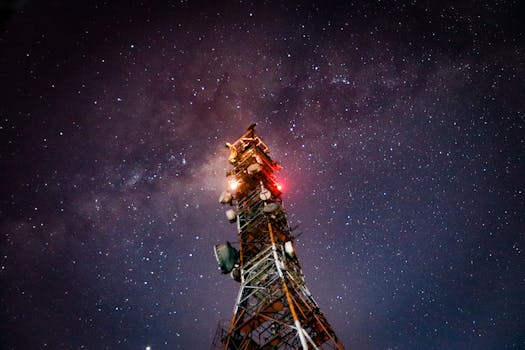
MEO Satellites: Revolutionizing Global Communication with Medium Earth Orbit Technology – MEO satellites
MEO satellites are at the forefront of a communication revolution, providing faster, more reliable, and wider-reaching connections across the globe. Medium Earth Orbit (MEO) technology has become a crucial component in the development of satellite constellations, bridging the gap between Geostationary Orbit (GEO) and Low Earth Orbit (LEO) systems. In this article, we will delve into the world of MEO satellites, exploring their history, functionality, benefits, and the impact they have on global communication.
History and Development of MEO Satellites
The concept of MEO satellites dates back to the early days of space exploration, with the first MEO satellite launched in the 1960s. However, it wasn’t until the 1990s that the technology began to gain traction, with the launch of the first commercial MEO satellite constellation, Iridium. This pioneering system paved the way for future developments, demonstrating the potential of MEO technology for global communication. Since then, numerous satellite operators have launched their own MEO constellations, including O3b Networks, Globalstar, and OneWeb.
Functionality and Benefits of MEO Satellites
MEO satellites operate at an altitude of approximately 2,000 to 36,000 kilometers, allowing them to provide a unique combination of coverage and latency. With a lower altitude than GEO satellites, MEO satellites offer reduced signal delay, resulting in faster and more responsive communication. Additionally, MEO satellites can provide higher elevation angles, reducing interference and improving overall signal quality. The benefits of MEO satellites include:
Enhanced connectivity: MEO satellites can provide seamless coverage, even in the most remote and underserved areas, connecting communities and enabling global communication.
Improved latency: With reduced signal delay, MEO satellites enable real-time communication, making them ideal for applications such as video conferencing, online gaming, and cloud computing.
Increased capacity: MEO satellites can support a large number of users, making them an attractive solution for high-demand applications, such as broadband internet and mobile backhaul.
Impact of MEO Satellites on Global Communication
MEO satellites have transformed the global communication landscape, enabling new applications and services that were previously unimaginable. From remote connectivity to IoT (Internet of Things) devices, MEO satellites are playing a vital role in shaping the future of communication. Some of the key areas where MEO satellites are making an impact include:
Remote and underserved communities: MEO satellites are providing connectivity to areas where traditional infrastructure is lacking, empowering communities and enabling access to essential services such as education, healthcare, and financial services.
Emergency response and disaster recovery: MEO satellites can provide critical communication services during emergencies, enabling first responders to coordinate relief efforts and connect with affected communities.
IoT and machine-to-machine (M2M) communication: MEO satellites are supporting the growth of IoT devices, enabling real-time communication and data exchange between devices, and facilitating applications such as smart cities, industrial automation, and environmental monitoring.
Conclusion
MEO satellites are revolutionizing global communication, offering a unique combination of coverage, latency, and capacity. As the demand for fast, reliable, and ubiquitous connectivity continues to grow, MEO satellites are poised to play an increasingly important role in shaping the future of communication. With their ability to provide seamless coverage, reduced signal delay, and increased capacity, MEO satellites are empowering communities, enabling new applications, and transforming the way we communicate globally.






